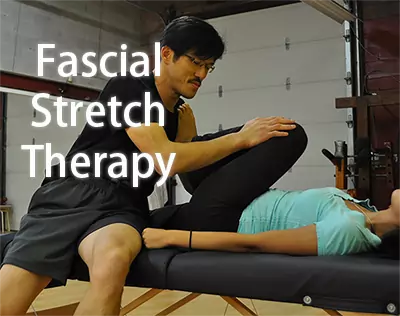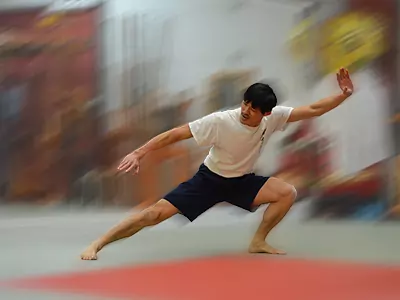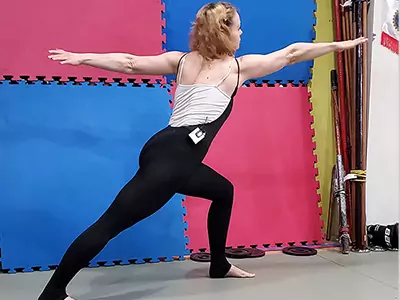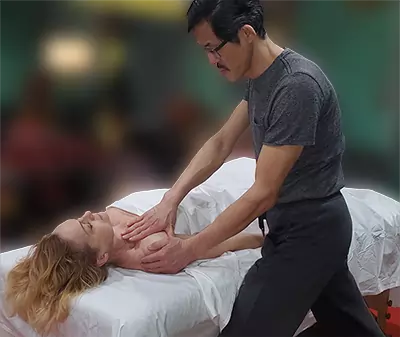Updated on Feb. 6, 2022
Fascial Stretch Therapy

What is Fascial Stretch Therapy
Fascial Stretch Therapy is a revolutionary stretching system developed by Stretch to Win. Elite athletes of NFL, NBA, NHL, martial artists and dancers have used the stretching system to improve their game. It is a form of myofascial stretching.
Fascia is in the entire human body. Fascia has layers of fibrous tissues that permeate throughout the human body. It exists between joints, muscles, organs, nerves and connective tissues in our body. The entire human body is made up of a vast fascia network. Trauma at the bottom of your foot can affect you in the back of the neck in various ways. Testimonials from our clients who have undergone the Fascial Stretching Therapy are positive. They reported immediate significant improvements in their flexibility. As well, they also indicated that they were able to retain the improved flexibility condition for long periods of time. Thus far, they are more apt to perform physical movements because they feel that their limbs are lighter.
Benefits of the Fascial Stretch Therapy Program:
Prevent injury or pain related to work and daily activities.
Most of us sit for the majority of our waking hours. While at work we sit in front of a computer, we sit for meetings, for our commute or watch TV for the evening. Maintaining a seated position for extended periods of time causes the hip joints to become inflexible. Hence, we get tight hips. A tight hip is a recipe for lower back health problems. Extreme tightness of connective tissues can constantly put pressure on the joints. This will cause the joint capsule to wear. This is one of the contributing conditions to the development of arthritis. With this in mind, fascial stretch therapy will aim to create a space in the joint.
Read more about Why Sitting Causes Lower Back Pain
Flexible joints also allow for a more efficient movement pattern. You will feel lighter in your feet, become more agile, and feel more energetic in movements because it is easier to move. So, each movement will have the least compensation.
Imagine if you sprain your ankle. You can still walk but you will tough it out and limp along and go about your daily life. As you limp along, you are changing and compensating your walking pattern.
You may know someone (or even yourself) who has suffered a serious or traumatic injury. For example, involved in a motor vehicle accident. Following the serious injury, you seem to be more likely to get injured or have ailments. The body system responds by changing movement patterns. This creates imbalances and some minor distortions in the body. The minor distortions can accumulate over time and become a bigger issue. So, it is always best to seek consultation for treatment with a professional upon suffering an injury.
Fascial stretch therapy relieves the distortions in the fascia and minimizes movement compensation.
Fascial stretch therapy can reduce/release stress from the body.
Day-to-day stress can cause distortions. Over a long time, it will cause imbalances leading to compensation in the movement patterns. Stretch therapy can release distortions and stress.
Fascial stretch therapy program helps athletes improve performance
More flexible joints allow efficient movement gait with less motion compensation. For example, a 100m sprinter needs flexible hamstring muscles (muscles in the back of the thighs). More flexible hamstring muscles allow the athlete to move their legs faster and easier with less energy. The improved flexibility in muscles will allow the athlete to shave off fractions of a second each stride. In elite-level competitions, a fraction of a second may be the difference between winning or losing a medal.
Stretching slows down the effects of ageing in regard to flexibility
As we age, we tend to get less flexible. Some of the factors that contribute to the reduction in flexibility:
Dehydration – Our muscles and connective tissues need water to stay flexible. As we age, our sensation of thirst is reduced, much like our other sensory functions of sight, hearing, smell, touch. They become less sharp. Thus, the drive to ingest fluid is compromised even though there is a deficit of body water content.
Changes in our connective tissues – As we age, our body replaces muscle fibres with fatty and collagen fibres.
What is collagen fibre? Collagen fibre is the ingredient that forms structures in bones. It also forms walls of blood vessels and organs, skin, tendons and other connective tissues.
Connective tissues are less flexible as their water content is much lower than lean muscles. The increased cross-linking and adhesion of fibres also contributes to stiffness in our bodies. Calcification, fraying, fragmentation in tissues also causes stiffness in the tissues.
Stretching stimulates our bodies to maintain and reverse the negative ageing effects of tissues. It promotes retention of fluid within our tissues thus, improving our flexibility.
For more information about fascial stretch therapy click on the Contact Now! button:
You may be interested in:
Why sitting causes lower back pain

Why sitting causes lower back pain
Functional Fitness & Strength

Our team of personal trainers can provide personal training in multiple programs: weight training, kettlebells, Essentrics, dance-inspired programs, martial arts training in traditional kung fu, kickboxing.
With a Registered Massage Therapist RMT in our team, Personal Trainer Toronto, has the capability to provide full-body assessments and prescribe therapeutic exercises.
More-about Functional Strength and Fitness programs
Kickboxing training

Kickboxing is a whole-body workout regimen that uses combinations of punching and kicking techniques
Fitness kickboxing is effective in training your core strength, improves stamina, better muscle tone.
The program is a combination of high-intensity interval training (HIIT) and aerobic training which is good for improving stamina.
Martial arts training

Apart from its self-defence applications, martial arts training program is used as a form of physical training for improving health and wellness.
Personal Trainer Toronto's martial art program is a well-rounded physical training regimen that improves muscle tone, helps with weight loss, and increases strength, flexibility, and coordination awareness.
The personal training in the martial art program is customized to address physical and structural balance issues.
More-about Martial Art program
Essentrics™-Dynamic stretching, strengthening

Essentrics™ is a dynamic stretching, strengthening program. The program is ideal for increasing mobility, range of motion (ROM), stress relief, relax tensed muscles.
More-about Essentrics™ program
Massage Therapy RMT

Our massage therapy sessions are provided by a Registered Massage Therapist RMT. Massage therapy treatments help to release stiffness in muscles, adhesions aka knots, aches and pains, joints stiffness.
If you have workplace health benefits or extended health coverage, you can offset the cost of the massage therapy sessions.